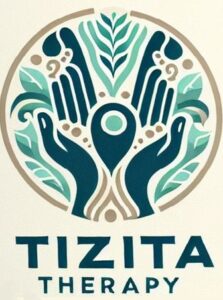Muscle and Connective Tissue Pain, also known as myofascial pain is a common but often misunderstood condition that affects the myo, meaning, muscles and the fascia, meaning, the spider web like connective tissue that covers and supports the muscles throughout your entire body. Unlike typical muscle pain, myofascial pain is characterized by the presence of trigger points—tight bands of muscle fibers that can cause referred pain in other parts of the body. This can lead to widespread discomfort, reduced mobility, and a significant decrease in the quality of life.
Understanding Myofascial Pain
Myofascial pain syndrome (MPS) can result from various factors, including muscle overuse, stress, injury, or poor posture. The pain associated with MPS is often persistent and can be challenging to diagnose, as it may mimic other conditions like arthritis or nerve pain. Trigger points, the hallmark of MPS, can be palpated as small, painful nodules in the affected muscles.
The Role of Manual Therapy
Manual therapy is a highly effective treatment for MPS. This hands-on approach involves applying gentle, sustained pressure to the myofascial connective tissue, aiming to release tension and improve blood flow. By targeting trigger points and the surrounding fascia, manual therapy helps alleviate pain, improve range of motion, and restore normal function to the affected muscles.
Benefits of Myofascial Release
One of the key benefits of myofascial release is its ability to address the root cause of myofascial pain, rather than merely treating the symptoms. This therapy promotes the healing of damaged tissue, reduces inflammation, and breaks the cycle of pain and muscle tightness. Patients often report significant relief after just a few sessions, making it a popular choice for those seeking a non-invasive, drug-free treatment option.
Complementary Techniques
In addition to myofascial release, other manual therapy techniques can complement the treatment of MPS. These include cupping therapy, deep tissue massage, which targets deeper layers of muscle and connective tissue, and stretching exercises designed to lengthen and relax the muscles. Incorporating relaxation and mindfulness practices can also enhance the effectiveness of manual therapy by reducing stress, which is a common contributor to myofascial pain.
A Holistic Approach to Pain Management
Managing myofascial pain effectively requires a holistic approach that considers both the physical and emotional aspects of the condition. By combining manual therapy with other therapeutic modalities, such as cupping therapy, reflexology and lifestyle changes, patients can achieve long-term relief and improved quality of life. At Tizita Therapy Center, we adopt holistic treatment approaches that are well acclaimed for their being non-invasive and risk free.
In conclusion, myofascial pain is a complex condition that requires a multifaceted treatment approach. Manual therapy, with its focus on releasing tension in the fascia and muscles, offers a powerful tool for managing this type of pain. By addressing the underlying causes of MPS, manual therapy not only alleviates discomfort but also helps restore function and improve overall well-being.


